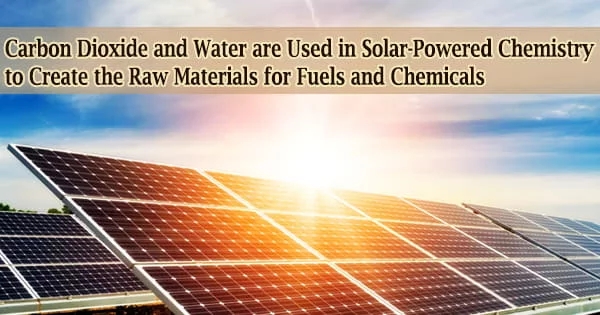An international team of researchers has demonstrated that solar-powered synthesis gas might convert carbon dioxide into fuels and valuable compounds.
“If we can generate syngas from carbon dioxide utilizing only solar energy, we can use this as a precursor for methanol and other chemicals and fuels. This will significantly reduce overall CO2 emissions,” said Zetian Mi, professor of electrical and computer engineering at the University of Michigan, who led the study published in the Proceedings of the National Academy of Science.
Syngas is often produced with the use of power from fossil fuels and consists primarily of hydrogen and carbon monoxide, with a little amount of methane. To make the process more effective, harmful chemicals are frequently used.
“Our new process is actually pretty simple, but it’s exciting because it’s not toxic, it’s sustainable and it’s very cost-effective,” said Roksana Rashid, first author of the study, who performed the experiments as a doctoral student in electrical and computer engineering at McGill University in Canada.
Mi’s team conquered the challenge of splitting carbon dioxide molecules, which are among the most stable in the universe, to develop a procedure that uses solely solar energy. For this, they strewn nanoparticles among a forest of semiconductor nanowires.
The carbon dioxide molecules were drawn to and twisted by those gold-coated chromium oxide nanoparticles, weakening the bonds between the carbon and oxygen.
The light energy was utilized by the gallium nitride nanowires to liberate electrons and the holes positively charged spaces they leave behind. The protons (hydrogen) and oxygen were broken apart in the water molecules by the holes.
Our new process is actually pretty simple, but it’s exciting because it’s not toxic, it’s sustainable and it’s very cost-effective.
Roksana Rashid
At the metal catalysts, the electrons split the carbon dioxide to create carbon monoxide and, occasionally, methane by attracting free hydrogen. The development of procedures to isolate oxygen from other gases.
“Our technology sheds light on how to build distributed syngas production from the air, water and sunlight,” said Baowen Zhou, co-corresponding author of the study with Mi and a former postdoctoral research fellow in Mi’s lab at McGill University and U-M.
Mi’s team was able to regulate the proportions of hydrogen and carbon monoxide produced in the process by varying the gold to chromium oxide ratio in the nanoparticles. This is significant because a fuel’s or chemical’s ease of manufacture depends on the hydrogen to carbon monoxide ratio.
“What is surprising is the synergy between gold and chromium oxide to make the CO2 reduction to syngas efficient and tunable. That was not possible with a single metal catalyst,” Mi said. “This opens up many exciting opportunities that were not previously considered.”
Mi’s scalable, industrial production process-based tunable syngas system. Seawater and other electrolyte solutions are anticipated to function similarly to the distilled water Rashid used in this experiment, and Mi has utilized them in related water-splitting investigations.
“The semiconductor we use as the light absorber is based on silicon and gallium nitride, which are the most commonly produced semiconductors, and we use very little material for the gallium nitride. Each nanowire is about one micrometer in thickness,” Mi said.
The next objective of Mi is to raise the device’s efficiency, which is now 0.89 percent. He expects that the technology, like solar cells, will be embraced for renewable energy when 10% of the light energy is transformed to chemical energy.
The Emission Reduction Alberta ERA, based at McGill University in Canada, the former residence of Mi, provided funding for the study.
The co-authors are all connected to McGill, either now or in the past. At the University of Waterloo in Canada, Rashid is a postdoctoral researcher in electrical and computer engineering. At Shanghai Jiao Tong University, Zhou is currently an associate professor of mechanical engineering.
NS Nanotech Inc. and NX Fuels Inc., two companies Mi co-founded, have been granted licenses to use some of the intellectual property associated with this study. These businesses are owned by Mi and the University of Michigan.





